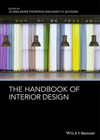Not every work of architecture has to compete for our attention
Building a new museum is like making a movie with a big cast of characters. There's the architect as director, the board of trustees (the producers), the curators with a story to tell in the galleries (the screenwriters), and a horde of technical consultants. Looming in the background is the reality of the budget'if value engineering is too severe, it's like canceling an Alpine location to shoot on a soundstage with fake snow. And just as Hollywood rushes to release movies before the end of the year'to be eligible for the Oscars'museum construction tends to finish with a frantic sprint to an opening-night gala.

In the waning days of last year, two high-profile American museums hurried to completion: the addition to Louis Kahn's 1972 Kimbell Art Museum in Fort Worth, designed by Renzo Piano Building Workshop, and the P'rez Art Museum Miami, by Herzog & de Meuron. Both are glass pavilions with a disarming outward simplicity; both were designed to modestly defer to the art and the public they will serve; and both'in vastly different ways'create a sense of place.
But quiet architecture disappoints some critics, a few of whom have chided Piano for bowing so deeply to Kahn's masterpiece, which sits magisterially across an expanse of lawn from the new addition. In Miami, one observer commented privately that Herzog & de Meuron's building was so uncharacteristically tame that it looked like a museum designed by . . . Renzo Piano.
Yet both buildings create the potential for rich experience, an under-rated value in a world that privileges innovative form. In Fort Worth'where the Kimbell board seems so delighted with the addition that they've officially named it the Piano Pavilion'Piano indeed deferred to Kahn's gem. As you enter the pavilion or move through its expansive glass lobby, you can't help but be drawn to the view of the Kahn building 65 yards away, seductively hovering over its reflecting pool. Originally, the site for the addition was not in such close relation to the Kimbell. But Piano embraced the proximity and a dialogue with the venerable museum. 'The most important thing is readdressing Kahn,' he said at the opening.
Piano hasn't built his own masterpiece, but with his mastery of materials, proportion, detailing, and light, he has created a quietly elegant and serene atmosphere in which to engage the extraordinary artworks in the Kimbell collection.
In Miami, the art is not the main attraction'the museum's own holdings so far are modest. But with Herzog & de Meuron's design, the P'rez museum is aiming for something else, to become a civic heart in this fast-growing metropolis. 'Architecture is like cooking,' said Jacques Herzog at the press preview. 'You cook in winter, you have certain ingredients; in summer it is different.' And in Miami, the design that Herzog & de Meuron has cooked up deploys the following elements: a downtown site on Biscayne Bay, vast expanses of high-performance glass, deep roof overhangs to shelter verandas and terraces, a tropical garden. Inside the lofty spaces, you look out as much as in'to the boats on the water and swaths of blue sky, to a sprouting green park, to cars streaming over the curving causeway to South Beach.
You could argue not only that making a museum is like producing a film but that the finished building is like a movie. So says Renzo Piano, who expresses the metaphor this way: 'Like a movie, a building is a simple thing'you go home with one good, clear emotion.'
If I had to distill the essence of his addition to the Kimbell, it would be how surprisingly fresh a painting such as Caravaggio's The Cardsharps, in its heavy gilded frame, looks hanging on Piano's sublimely refined concrete gallery walls, all silvery-gray silkiness, and washed in the softest light.
If I had one cinematic takeaway from the P'rez museum, it would be the pulsating impression of hundreds of people crowding the opening who could flow easily through the generous galleries or spill out onto the terraces filled with music in the subtropical night. This is a place not only for art but for people, for colors, for exuberance, for fun.
Here is first-rate architecture that doesn't shout for attention. What a radical idea.




